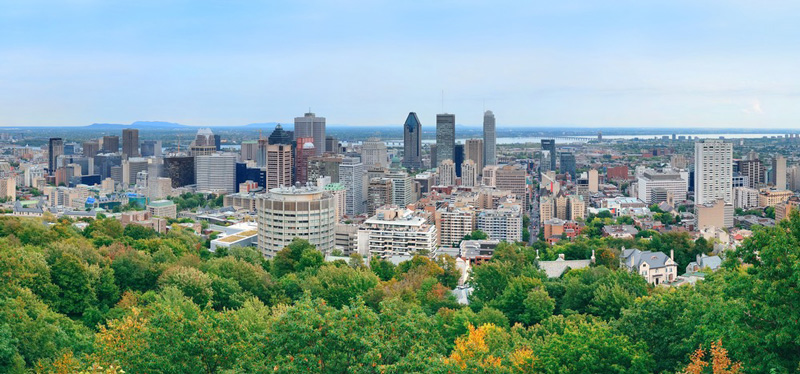Canada is a broad land – broad in mind, broad in spirit, and broad in physical expanse.”
– Harry S. Truman
One’s decision to study in a particular country involves a commitment to spend a good few years there at the very least. It is a must that the student likes it over other destinations competing for attention. There are several factors because of which Canada scores over most other foreign study destinations. Without being unnecessarily exhaustive, here we try to highlight them:
High Standard of Education
Canada is recognized worldwide for its outstanding quality of education, even at the post-Secondary level. And today the country is home to 11 of the world’s top 250 universities. A distinct and emerging trend seems to be the “internationalization” of higher education (,www.msquaremedia.com). It is a continuously-growing sector, with a quantum jump in student enrollments having occurred since 2008.
The biggest senders are China and India. Availability of a wide range of courses is a big source of attraction for the students. As is the existence of state-of-the-art research facilities and infrastructure. Talented international students are encouraged to build rapport with their professors and classmates during in-person sessions. Socializing and networking help them immensely at a later date. Whether for securing part-time jobs or even full-time regular ones post completion of their study.
Affordability Factor
“World-standard education in a budget” is yet another reason why Canada is often preferred as the most-likely study destination by students and their families. It is true the country does charge the international student a tuition fee that is double or more than the domestic rate.
However, the cost of education here is far more reasonable than in several other countries. Recent data indicates that Canada’s average annual tuition fee at the Bachelor’s level is about 2.5 times less than that in the UK. Australia and even Japan are more expensive study destinations in comparison. Not to mention the USA, of course.
Especially, when one takes into account the inevitable living expenses that go with the whole study abroad experience. Even a decade ago, Canada, as an international study destination for Business degrees, was far more pocket-friendly than the USA and Australia. (International Journal of Business and Management, Vol. 7, No. 4, February 2012 )
Availability of jobs
It is relatively easy in this country. The Times Higher Education (THE) lists a number of top Universities in Canada that consistently rank high in the Graduate Employability Rankings. Professions in high demand include Doctors, Surgeons, Dentists, Nurses/Nursing, Lawyers & Judges, Engineers, Data Analysts, Financial Analysts, Cybersecurity Engineers, Physiotherapists, and many more.
Even in 2021, part-time jobs have also seen a steady rise. From 59% in January it climbed 2 clear percentage points by October same year. And it is set to continue that trend in the months ahead. The minimum hourly wage for part-time jobs may range from 13-25 CAD. Some of the in-demand part-time, short-term assignments include those of Teaching/Tutors, Web Developers/Designers, Clerical work, Customer Service Representatives, Cook/Chef, and so on.
Canadian cities with high job opportunities include Vancouver in British Columbia; Hamilton, Ontario; Victoria, BC; and Edmonton and Calgary in Alberta.
Ease of Immigration
Immigration supports Canada’s demographic and economic growth. By 2018, net immigration has accounted for an incredible 80% of the nation’s population increase. Nearly 185000 permanent residents (PR) were welcomed into that country in 2020 alone. (,www.canada.ca) And it is predicted that by early 2030 Canada’s population increase will rely exclusively on immigration.
Several types of immigration programmes are available – Express Entry Programme, Provincial Nomination Programme, Atlantic Immigration Programme, Quebec Skilled Worker Programme, and so on. Canada’s point-based immigration system ensures that highly-skilled candidates who also possess the right qualifications stand a strong chance of being offered a job in that country. Which, in turn, greatly increases their chances of being granted permanent residency status upon application.
Immigration has the active backing of the government and is legally encouraged. Compared to other developed countries, like the UK, Australia, and the USA, it is much easier to migrate to Canada and start life afresh.
High Quality of Life

picture courtesy: www.immigration.ca
Though unseen and often unfelt, the environment affects us in our endless day-to-day interactions with it. It is an invisible cloak. Much like a monk’s habit and covering us from head to foot. A fresh and unspoiled surrounding energize us, while a polluted one becomes a source of discomfort, unhappiness, diseases. All of which adversely affect one’s quality of life, while a few can, at the very least, drastically shorten one’s life span.
Canada scores even on this important front. According to the OECD Better Life Index, “Canada performs well in many dimensions of well-being relative to other countries” (,www.oecdbetterlifeindex.org). Some of the categories are life satisfaction, income, jobs, education, environment, social connections, and so on.
A good 70% of the employment-ready population (15-65 years) have a paid job. An overwhelming majority of 92% of the adult population are educated, at least up to the “upper secondary level” (i.e. Class 12). Life expectancy here is also higher at around 82 years. There is a far greater degree of work-life balance in Canada. And to top it all, the level of particulate matter (PM 2.5) in the atmosphere is way lesser. Coming from India where pollution is endemic, this is unbelievable!
Is it any surprise then, that 90% of the people are satisfied with the quality of life in Canada?
Great Natural Beauty
For the first time ever, the country takes the top spot overall in the “2021 Best Countries Report”. (,www.usnews.com). Canada possesses the longest continued shoreline in the world.

Not only is it rich in mineral resources but also is breathtaking in its majesty with towering mountains, unbelievably-clear blue skies, and still-yet-sparkling waters of its famous lakes.
The country is regarded by many as one where people come “Home for a Rest” (a hugely popular song performed by the folk band, Spirit of the West). Picturesque locations in Newfoundland and Labrador vie for eyeballs with those in New Brunswick, Ontario in the east, British Columbia in the west, and everything in between.
Each province has its unique source of attraction that leaves us breathless.
Diversity and Tolerance

picture copyright: www.canadianimmigrant.ca
Especially when the country welcomes everyone with open arms. It welcomes students from all over the world. Immigrants make a beeline for this friendly nation. As of 31st December last year, there were about 530,000 international students studying in Canada (,www.cicnews.com), with the maximum number of them being from India. Also, as many as 6 years ago, over one-third of nurse aids, orderlies, and patient service associates were immigrants. (,www.canada.ca)
When dealing with such a huge influx of people, a nation must exercise tolerance, patience and restraint in its dealings. And so it is with Canada, which is one of the world’s safest countries. Here, men and women coexist happily and with perfect ease. Even as they speak different languages, belong to diverse ethnic backgrounds, profess a variety of faiths, and observe a range of customs and practices. Reassuringly enough, the country’s multiculturalism and diversity are legally protected.
Now, wouldn’t you like to study and live in such a land?
